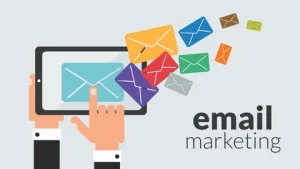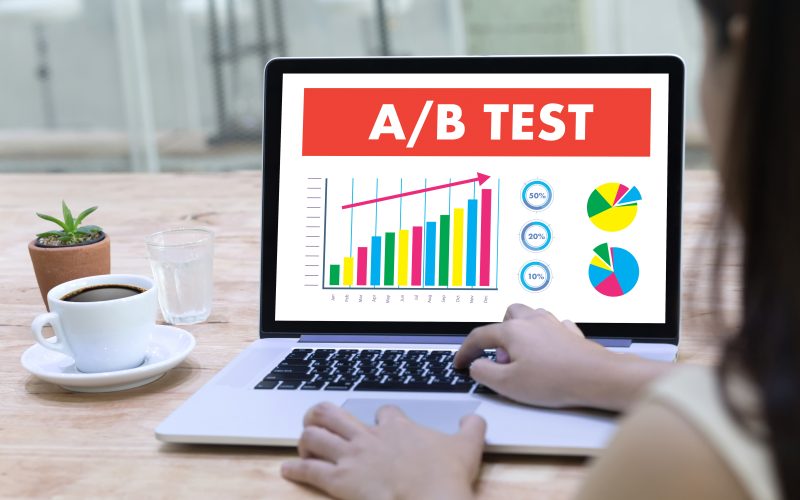In today’s data-driven digital landscape, businesses are continually seeking ways to enhance their marketing strategies and maximize return on investment (ROI). One of the most effective methods for achieving this is A/B Testing, also known as split testing. A/B Testing allows marketers to compare two versions of a webpage, email, or other content to determine which one performs better in achieving a specific goal. This comprehensive guide explores the concept of A/B Testing, its importance in Conversion Rate Optimization (CRO), and how it can significantly enhance marketing strategies, particularly in landing page optimization and email campaign testing.
What is A/B Testing?
A/B Testing is a controlled experiment that involves presenting two variations (A and B) of a single element to different segments of users and measuring their performance against a predefined metric. The primary objective is to identify which version yields better results, enabling data-driven decisions that enhance user experience and improve conversion rates.
Example
For instance, an online retailer may wish to test two different call-to-action (CTA) buttons on their product page. They could design Version A with a red button that says “Buy Now” and Version B with a green button that says “Get Yours Today.” By randomly directing half of their visitors to the red button and the other half to the green button, the retailer can analyze the resulting purchase data. If Version B leads to a higher number of purchases, the retailer can confidently implement the green button as the default option, ultimately optimizing the page for better sales performance.
The Importance of A/B Testing in Marketing

Conversion Rate Optimization (CRO)
A/B Testing is a cornerstone of Conversion Rate Optimization (CRO). CRO refers to the systematic process of increasing the percentage of website visitors who take a desired action—whether it’s making a purchase, signing up for a newsletter, or filling out a contact form. By utilizing A/B Testing to systematically test and refine various elements of marketing campaigns, businesses can achieve higher conversion rates.
Benefits of A/B Testing
- Data-Driven Decisions: A/B Testing provides quantitative evidence on user preferences, reducing reliance on assumptions. Instead of guessing which version of content will perform better, marketers can base their decisions on actual user behavior.
- Improved User Experience: Continuously testing and optimizing elements allows businesses to create a more engaging experience for their audience. A/B Testing helps identify pain points in user interaction, leading to enhancements that keep users engaged and encourage conversions.
- Increased ROI: Higher conversion rates lead to increased revenue without necessarily increasing traffic. This maximizes marketing budgets and ensures that every dollar spent contributes to business growth.
- Risk Mitigation: Testing changes on a smaller scale before full implementation helps mitigate the risk of negative impacts on overall performance. A/B Testing allows marketers to experiment safely, reducing the potential fallout from poor decisions.
- Enhanced Understanding of Audience: Regularly conducting A/B Tests enables marketers to gain insights into audience preferences and behaviors. Understanding what resonates with users allows for more effective targeting and messaging.
How to Set Up A/B Testing
Setting up an A/B Test involves several critical steps. Proper planning and execution can lead to meaningful insights and improvements.
Step 1: Define Your Objective
Before starting an A/B Test, it is essential to clearly define what you want to achieve. Are you looking to increase sales, improve sign-ups, or enhance user engagement? A well-defined objective serves as a guiding star throughout the testing process, ensuring that efforts remain focused.
Step 2: Identify Your Variables
Once your objective is set, decide which specific elements you want to test. This could include anything from headlines, images, CTAs, layout, color schemes, or even the placement of elements on the page. It’s crucial to isolate one variable per test to accurately measure its impact on user behavior.
Step 3: Create Variations
Develop the two (or more) variations of your chosen element. Ensure that only one element is changed between the versions. For example, if you are testing a landing page headline, keep the rest of the page consistent to ensure that any difference in performance can be attributed to the headline alone.
Step 4: Segment Your Audience
Randomly divide your audience into two groups. Each group should be similar in characteristics to ensure the results are reliable. This segmentation ensures that the test results are valid and not skewed by external factors, such as the time of day or user demographics.
Step 5: Run the Test
Launch your A/B Test and allow it to run for a sufficient duration to gather statistically significant data. The length of time needed for an A/B Test can vary based on the amount of traffic your site receives and the significance of the test results you are aiming for.
Step 6: Analyze Results
After the test, analyze the results to determine which variation performed better. Use metrics such as conversion rate, bounce rate, and engagement level. Statistical significance should be considered to ensure that the results are not due to random chance.
Step 7: Implement Changes
Once you have identified the winning variation, implement the changes across your platform. Continue to monitor performance to ensure the new version meets or exceeds expectations.
Step 8: Iterate and Repeat
A/B Testing is an ongoing process. Continue to test new ideas, layouts, and elements to keep improving your marketing efforts. As user preferences change over time, regular testing ensures that your marketing strategies remain effective.
Using A/B Testing for Email Campaigns

Email Campaign Testing is another area where A/B Testing proves invaluable. Marketers can test various elements within emails, such as subject lines, email layouts, images, and CTAs.
Example
Suppose a company wants to test two subject lines for an upcoming promotional email. They could send one subject line—”Exclusive Offer: 30% Off Your Next Purchase!”—to one segment of their list and another—”Don’t Miss Out on 30% Off!”—to a different segment. By analyzing open rates and click-through rates, the company can determine which subject line is more effective and apply it to their full mailing list.
Benefits of A/B Testing in Email Campaigns
- Higher Open Rates: Optimizing subject lines through A/B Testing can lead to significantly higher open rates. A/B Testing enables marketers to craft compelling subject lines that resonate with their audience.
- Increased Engagement: Testing email layouts can improve user engagement and encourage clicks on key content. By experimenting with different formats, companies can discover the design that captivates their audience the most.
- Improved Conversion: By refining CTAs within emails, marketers can enhance the likelihood of conversions from email campaigns. A/B Testing allows for the identification of the most effective language and placement for CTAs.
- Enhanced Personalization: A/B Testing enables marketers to tailor emails to specific segments of their audience, increasing relevance and engagement. Testing different personalization tactics can reveal what resonates best with different groups.
Real-Life Case Study: A/B Testing in Email Campaigns
Consider a popular online fashion retailer that wants to boost sales through its email marketing campaign. They decide to conduct an A/B Test on their promotional email.
- Version A features a minimalist design with a clear focus on the product image and a simple “Shop Now” button.
- Version B employs a more colorful design with multiple images and text blocks, encouraging users to explore the sale.
After sending the email to their segmented audience, the retailer analyzes the results. Version A achieves a 25% higher click-through rate and a 15% higher conversion rate. The retailer decides to adopt the minimalist design for future campaigns, demonstrating the effectiveness of A/B Testing in optimizing email marketing efforts.
Multivariate Testing vs. A/B Testing
While A/B Testing compares two variations of a single element, Multivariate Testing evaluates multiple elements simultaneously. This can provide deeper insights into how different components interact with one another.
A/B Testing
A/B Testing is most effective when testing a single variable. For example, if a marketer wants to test two different headlines on a landing page, they can create two distinct versions of the page—one with the original headline (A) and another with a new headline (B). By analyzing which headline leads to more conversions, the marketer can make an informed decision.
Multivariate Testing
Multivariate Testing, on the other hand, assesses multiple variables at once. For instance, a marketer may want to test different combinations of a headline, image, and CTA on a landing page. In this case, they would create several versions of the page, each with a different combination of these elements. This allows for a more comprehensive understanding of how various elements work together.
Analysis Table: A/B Testing vs. Multivariate Testing
| Feature | A/B Testing | Multivariate Testing |
|---|---|---|
| Purpose | Compare two versions of a single element | Test multiple variations of multiple elements |
| Complexity | Simpler setup and analysis | More complex due to multiple variables |
| Data Collection | Requires a smaller audience | Requires a larger audience for reliable data |
| Timeframe | Faster results, ideal for quick tests | Takes longer due to complexity |
| Use Case | Specific element testing (e.g., CTA) | Comprehensive testing (e.g., layout, content) |
| Statistical Power | Limited to one variable | Greater insights from multiple variables |
Implementing A/B and Multivariate Testing in Your Marketing Strategy
To effectively implement A/B Testing and Multivariate Testing in your marketing strategy, consider the following steps:
- Educate Your Team: Ensure that all team members understand the principles and benefits of A/B Testing. This knowledge will foster a culture of data-driven decision-making.
- Start Small: Begin with a few simple tests. As you gain experience and confidence, gradually increase the complexity of your tests.
- Use the Right Tools: Invest in A/B Testing tools that fit your business needs. Many platforms offer built-in A/B Testing capabilities for landing pages and email campaigns, simplifying the process.
- Analyze and Report: After conducting tests, compile your findings into a comprehensive report. Share insights with stakeholders and use the data to inform future marketing strategies.
- Encourage Continuous Testing: Make A/B Testing a regular part of your marketing process. Regular testing ensures that you stay updated with user preferences and market trends.
Conclusion
A/B Testing is a powerful tool in the marketer’s arsenal, offering a structured approach to enhancing performance through data-driven insights. By embracing A/B Testing in various aspects of marketing, including landing page optimization and email campaigns, businesses can significantly improve their conversion rates and overall marketing effectiveness.
As the digital landscape continues to evolve, leveraging A/B Testing will remain crucial for businesses seeking to stay ahead of the competition. Regular testing fosters a culture of continuous improvement and keeps your marketing strategies aligned with user preferences.
Final Thoughts
Incorporating A/B Testing into your marketing strategy is not just about improving metrics; it’s about understanding your audience better and delivering a more tailored experience. Whether you are looking to optimize landing pages, enhance email campaigns, or explore the world of multivariate testing, this comprehensive guide should serve as a solid foundation for your A/B Testing journey.
Call to Action
Ready to get started with A/B Testing? Identify a key element in your marketing strategy that you can test today. Whether it’s a landing page headline or an email subject line, remember that every test is a step toward understanding your audience and improving your marketing effectiveness.












